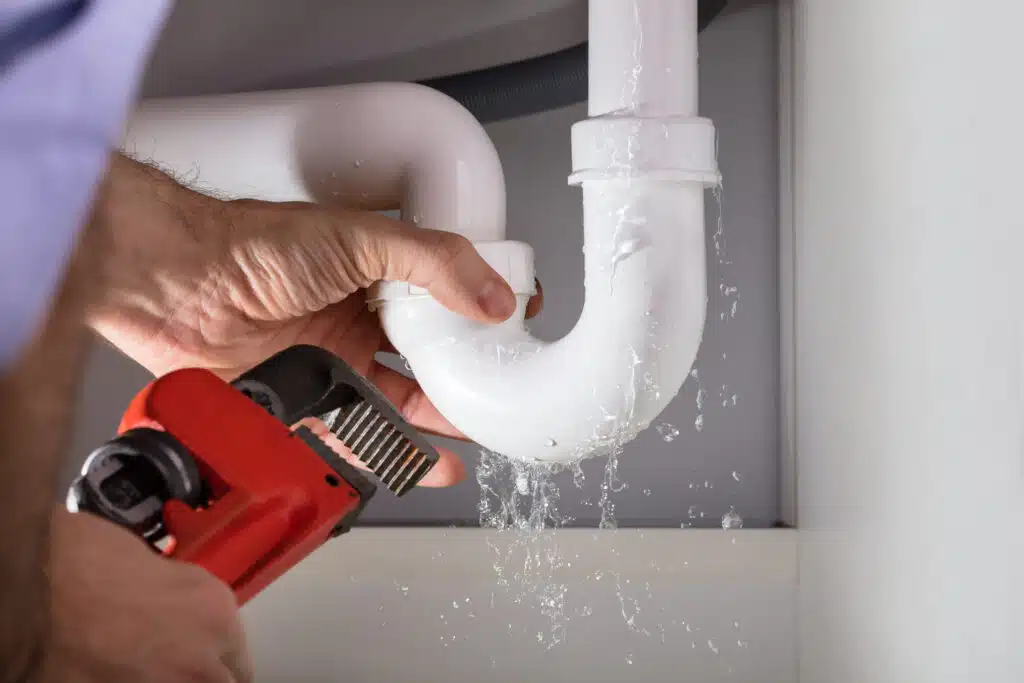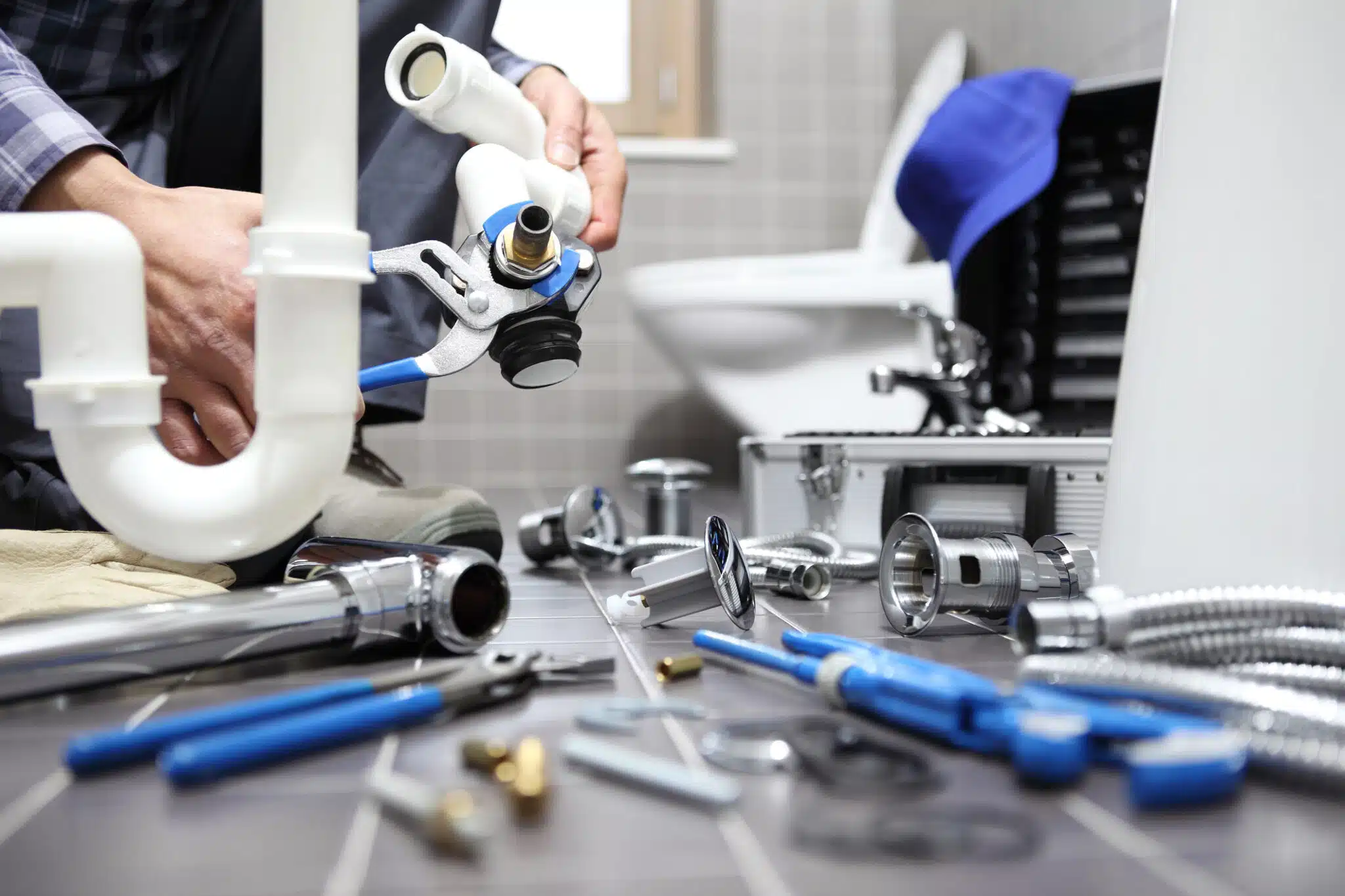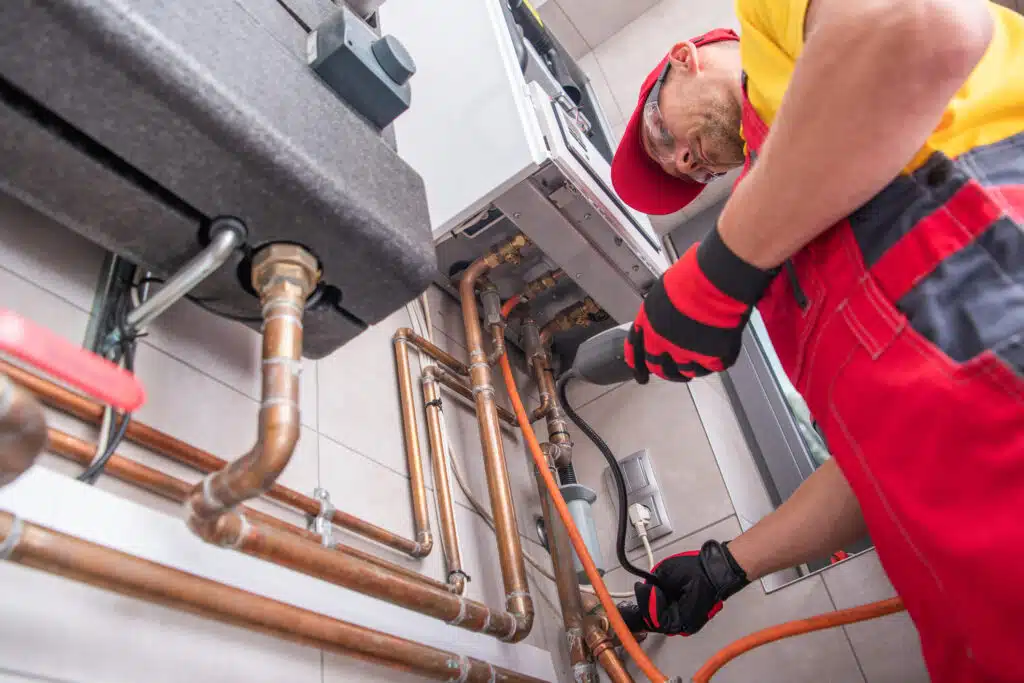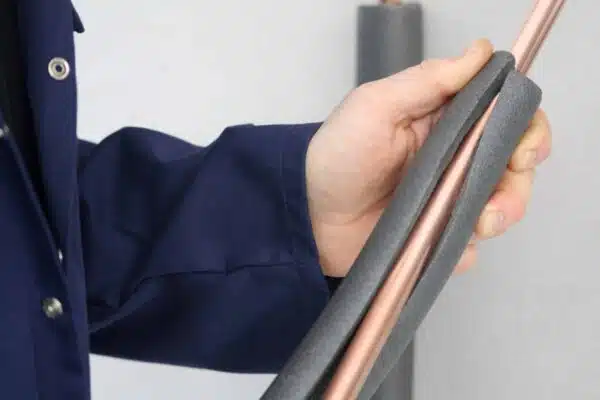If your home has frequent leaks, rusty water, low water pressure, or noisy pipes, it may be time for a repipe. Homes over 20 years old, especially those with galvanized steel or polybutylene pipes, are at higher risk for plumbing issues. Repiping involves replacing old pipes with modern materials like PEX or copper, improving water quality, and pressure, and reducing future maintenance costs. If your home is showing these signs, contact a licensed plumber to inspect and upgrade your system.

Wondering if your home might need a repipe or repiping soon? If you’re dealing with rusty water, low pressure, or frequent leaks, it’s more than just an inconvenience—it’s a clear sign that your plumbing system could require a full repipe.
Ignoring these issues can lead to costly water damage and even health risks. If your home is over 20 years old or showing symptoms like these, it’s a good idea to understand what’s going on with your pipes and consider a repipe. Let’s dive into the most common signs that indicate your home might need to be repiped.
What is Repiping?
Repiping is a complete replacement of your home’s plumbing system. It involves removing the old pipes and installing new ones, typically using modern materials like PEX or copper.
This process can include everything from the water supply lines to the drainage pipes, depending on the condition of your existing system. Repiping isn’t just about fixing leaks—it’s about preventing future problems, improving water quality, and boosting the overall efficiency of your plumbing.
Sign #1: Frequent Leaks
If you’re constantly finding leaks around your home, it’s a strong sign that your plumbing system is due for an overhaul. Ignoring these problems can lead to more serious issues down the road. Here’s what to look out for:
- Notice leaks in multiple areas: Occasional drips are one thing, but if you’re dealing with repeated leaks in various parts of your home, it could mean your pipes are worn out or corroded. Over time, this leads to weakened pipe walls that can burst unexpectedly.
- Higher water bills lately: Leaking pipes wastewater, which can cause your monthly water bills to skyrocket. If your water usage habits haven’t changed, but your bills keep going up, this is a clear red flag that your plumbing needs attention.
- See water stains or damp spots: These could indicate hidden leaks, leading to water damage in walls, ceilings, and floors. Left unchecked, this moisture can result in mold growth and structural damage that’s costly to repair.
If you’re calling a plumber to fix a new leak every few months, it’s not just an annoyance—it’s a signal that the entire system may be failing. Consider a full repipe to save time and money, and prevent further damage before these small leaks turn into major problems.
Sign #2: Discolored Water
Discolored water often means your pipes are corroding. Older metal pipes like galvanized steel or iron can rust from the inside, allowing rust particles to mix with your water.
Look out for the following signs:
- Yellow or brown water when you first turn on the tap: This usually indicates rust buildup inside your pipes, especially if it clears up after running the water for a few minutes.
- Reddish stains in sinks and bathtubs: Rusty water can leave stubborn, reddish-brown stains on your fixtures, which are difficult to clean and can make your bathroom or kitchen look dirty.
- Metallic taste or strange odor: Corroded pipes can impact the smell and flavor of your water, making it unappealing to drink and potentially unsafe for cooking.
- Clothes or dishes coming out dingy or stained: Water discoloration can also affect your laundry and dishwashing, leaving behind stains that are hard to remove.
If you’re dealing with discolored water, it’s more than just an eyesore—it could be a sign that your pipes are deteriorating and need to be replaced soon.
Sign #3: Low Water Pressure
Low water pressure is frustrating and often signals bigger plumbing issues like clogged, leaking, or aging pipes that can’t keep up with your home’s needs.
Common causes of low water pressure include:
- Pipe corrosion: Rust and mineral buildup narrow the pipe’s diameter, restricting water flow and gradually reducing pressure throughout the home.
- Leaks or damaged pipes: Cracks or leaks reduce pressure, and even small leaks can cause noticeable drops and water damage if left unchecked.
- Clogged pipes: Debris-like sediment and rust build up over time, creating partial blockages that lead to slow and inconsistent water flow.
- Old, outdated pipes: Older materials like galvanized steel can’t handle today’s water demands, causing low pressure and other plumbing issues.
If only a few fixtures have low pressure, the issue may be localized. But if your entire house has weak water flow, it’s a sign of a bigger problem. A repipe can fix this, restoring strong, consistent water pressure throughout your home, and making daily tasks easier.
Sign #4: Noisy Pipes
These noises often signal that your plumbing system is struggling and needs attention.
Here’s what the different noises could mean:
- Banging or “Water Hammer”: This happens when water flow is suddenly stopped or redirected, creating shock waves that cause the pipes to bang against walls or other pipes. Over time, this constant pressure can lead to pipe joints loosening, leaks, or even burst pipes.
- Rattling or Shaking Pipes: If you hear rattling when water is running, it’s usually because the pipes aren’t secured properly. Loose pipes vibrate as water flows through them, which can cause wear and tear on joints and connections.
- Whistling or Squealing Sounds: Whistling noises are often caused by narrowed sections of the pipe due to corrosion or buildup. The restricted flow forces water through a smaller space, creating a high-pitched sound that indicates your pipes may be partially clogged.
- Gurgling or Bubbling: Gurgling sounds usually mean that there’s a blockage somewhere in the drain pipes, causing trapped air to escape. This can eventually lead to serious clogs if not addressed.
If you hear any of these noises regularly, it’s a good idea to have a plumber inspect your system. Repiping can eliminate these annoying sounds and ensure that your plumbing system is securely fastened and functioning smoothly.
Sign #5: Age of Plumbing
The age of your plumbing is a major indicator it’s time to repipe. Older homes, especially those built before the 1970s, often used materials like galvanized steel or polybutylene, which corrode and break down, increasing the risk of leaks and water damage.
Consider these points when evaluating the age of your plumbing:
- Galvanized Steel Pipes (pre-1960s): These pipes are prone to rust and corrosion, leading to clogs and discolored water. If your home still has galvanized steel pipes, it’s a good idea to replace them, as they’re known to fail suddenly.
- Polybutylene Pipes (1970s – 1990s): Once popular for being affordable and easy to install, polybutylene pipes have been found to break down when exposed to chlorine in water, resulting in frequent leaks and even pipe bursts.
- Copper Pipes (1980s – Present): While copper is generally reliable, it can still corrode over time, especially if exposed to acidic water or if installed incorrectly. If your home’s copper pipes are over 20 years old, it’s smart to have them checked regularly.
- PEX Pipes (1990s – Present): PEX is a more modern material that is durable and resistant to corrosion. However, if your home has a combination of old and new pipes, the aging sections may still cause issues.
If you’re unsure what kind of pipes your home has or how old they are, it’s best to consult a professional plumber. Repiping your home with modern materials can give you peace of mind, reduce maintenance costs, and improve the efficiency of your plumbing system for decades to come.
Sign #6: Water Stains on Walls or Ceilings
These could mean hidden leaks behind your walls, potentially leading to major damage. Even small stains can signal bigger plumbing issues that need immediate attention.
Here’s what to watch out for:
- Yellow or brown spots on walls or ceilings: These stains are often caused by slow leaks that have been seeping into your home’s structure for a long time. They’re usually a sign that the pipe behind that area is leaking or has burst.
- Peeling or bubbling paint: If the paint or wallpaper in certain areas is starting to peel, bubble, or crack, it’s likely due to moisture seeping through. This is often caused by a hidden plumbing leak inside the wall, which is slowly saturating the surface.
- Musty odors: Water trapped behind walls or ceilings can create a damp, musty smell. This odor indicates possible mold or mildew growth, which can spread quickly and pose health risks if not taken care of.
- Sagging ceilings or walls: This is a more severe sign that the structure of your home is being affected by a hidden water leak. If your ceiling is sagging or walls are warped, there may be significant water damage that requires immediate attention.
If you notice any of these signs, it’s crucial to act fast. A small stain could turn into a big (and expensive) problem if the leaking pipe isn’t repaired or replaced.
Sign #7: Mold Growth
Hidden leaks create moist spots perfect for mold growth, which can damage your home and cause health problems. Fix leaks quickly to protect your home and family.
Here’s what to look out for:
- Black or green spots on walls, ceilings, or floors: Mold often appears as dark patches or clusters of small spots. If you see mold in areas that don’t typically get wet, like bedrooms or living rooms, it could mean that there’s a leak behind the surface.
- Musty or earthy odors: A persistent, musty smell is a common indicator of mold growth. Even if you can’t see any visible signs, a strong odor suggests mold is hiding somewhere in your walls, ceilings, or under flooring.
- Sudden increase in allergy symptoms: If your household is experiencing more sneezing, coughing, or eye irritation, it could be due to mold spores spreading through the air. This is especially likely if symptoms get worse in certain rooms.
- Visible water damage or dampness: Moist walls, warped flooring, or soft spots in your drywall are all signs of moisture buildup that can lead to mold. Any area that stays damp for an extended period will eventually attract mold growth.
If mold is caused by hidden leaks, surface cleaning isn’t enough. You need to fix the root issue: leaking pipes. A repipe can eliminate leaks, dry out your home, and prevent future mold growth, keeping your home safe and healthy.
Benefits of Repiping Your Home
Considering a repipe for your home can seem like a big decision, but the benefits far outweigh the costs, especially if your pipes are outdated or causing frequent issues.
A full repipe not only resolves existing problems but also prevents new ones from emerging. Repiping can significantly enhance your home’s value, safety, and overall comfort, giving you peace of mind and reliable plumbing for years to come.
Improved Water Quality
One of the biggest advantages of repiping is that it dramatically improves your water quality. If your current pipes are corroded, rusted, or filled with mineral buildup, you may notice discolored water, unpleasant tastes, or strange odors.
By choosing to repipe your home with modern materials like PEX or copper, you can enjoy clean, fresh water that’s safe for drinking, cooking, and bathing.
Increased Home Value
Repiping can significantly boost your home’s value. A new plumbing system makes your property more appealing to buyers, as it eliminates concerns about future plumbing issues.
Whether you plan to sell soon or want to invest in your home’s long-term health, upgrading with a whole-house repipe is a smart move that sets your home apart.
Long-Term Cost Savings
Although repiping might seem like a large expense upfront, it can save you a lot of money in the long run. Constant repairs for leaks, clogged pipes, or low water pressure can add up quickly.
A complete repipe eliminates the need for ongoing fixes and reduces the chances of costly water damage. Plus, a more efficient plumbing system can lower your monthly water bills by eliminating wasted water from leaks and breaks.
Enhanced Water Pressure and Flow
If you’ve been dealing with poor water pressure for years, repiping will make a world of difference. New pipes ensure that water flows smoothly and evenly throughout your entire home.
That means no more weak showers or waiting forever to fill up a pot of water. A repipe will restore your water pressure to its original strength, making everyday tasks like showering and dishwashing much easier.
The Repiping Process
Understanding the basics can make the process much less overwhelming. A professional repiping project is typically completed within a few days, depending on the size of your home. Here’s what to expect:
What to Expect During a Repiping Project
First, the plumber will do an initial inspection of your plumbing to identify the best approach for the job. Next, the water supply is turned off to safely remove the old pipes.
After removing the old, damaged, or corroded sections, new PEX or copper pipes are installed. Once the new system is in place, walls and floors are restored, and everything is thoroughly tested to ensure it functions properly.
Why Choose a Licensed Plumber for a Repipe?
A licensed plumber guarantees a safe, code-compliant installation, minimizing the risk of future issues. They’ll use high-quality materials, ensure proper installation, and often provide a warranty for peace of mind.
With a licensed plumber, the job will be done right the first time, protecting your home’s plumbing for years to come.
Ready to Repipe and Restore Your Home’s Plumbing?
If you’re dealing with constant leaks or rusty water in Lancaster, York, or Harrisburg, PA, it’s time to take action! A professional plumber can eliminate these issues and give you peace of mind.
Contact Benjamin Franklin Plumbing of Lancaster to upgrade your home’s plumbing with reliable, long-lasting materials. Our experienced team is here to help keep your home’s water flow strong and safe!

FAQs
How can I tell if my home needs a repipe?
Frequent leaks, discolored water, low water pressure, and noisy pipes are strong indicators that your home might need a repipe. If your plumbing is more than 20 years old and showing these issues, a repipe is usually a more effective solution than constant repairs.
How long do new pipes last after a repipe?
New pipes can last for decades! Copper typically lasts over 50 years, while PEX pipes can last up to 40 years or more, giving you a reliable system for the long haul.
Can I repipe my home myself?
Repiping is a complex job that requires specialized tools and expertise. Attempting a DIY repipe can lead to leaks, damage, and code violations. It’s best to hire a licensed professional for safety and quality.
How disruptive is the repiping process?
Repiping does involve some disruption, as walls or floors might need to be opened to access old pipes. However, professional plumbers work to minimize the impact and usually complete the project within a few days, restoring everything back to normal afterward.
What’s the best pipe material to use for a repipe?
PEX and copper are top choices. PEX is affordable and resistant to freezing, while copper is durable and long-lasting. Choosing the right material depends on your needs and budget.





















